MacGuffin, 2020 ff.
For the work MacGuffin I reconstruct scenery from Alfred Hitchcock films. The reconstructed settings are photographed in fine detail.
The term MacGuffin is attributed to Hitchcock and stands for more or less arbitrary objects or people that trigger or advance the plot in a film.

Pitchblende from the broken wine bottle in „Notorious“

The color red in „Marnie“
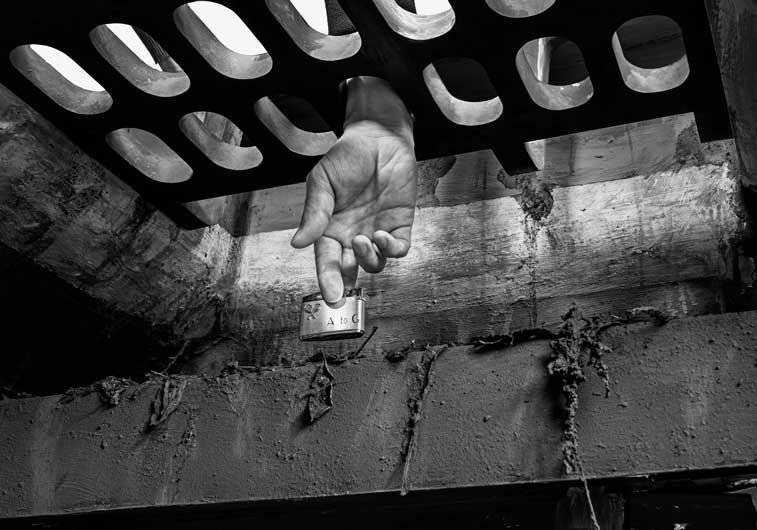
The lighter with the initials in „Strangers on a Train“
Lens disassembly, 2019
For the twelve-part work Lens Disassembly, I documented photographically how I disassemble the lens used for the documentation piece by piece. The first unexposed photo is still taken with the lens cap on. Bit by bit, disassembled components of the lens can be seen. Since in the further course the lens system was also disassembled, focal length and sharpness change and more and more aberrations appear. Finally, the iris diaphragm has been removed and the photo is is overexposed.
Bauhaus Dessau, 2019 (selection)
Museum for Photography, Braunschweig
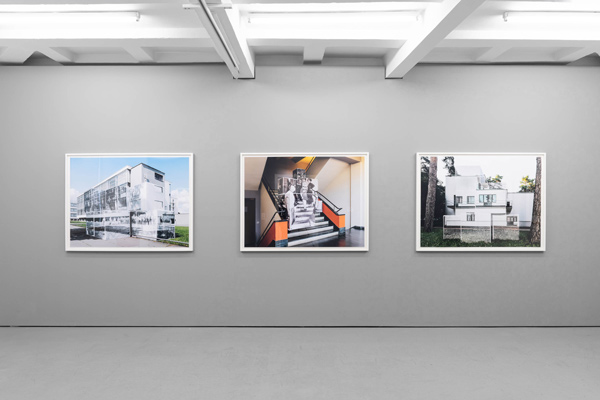
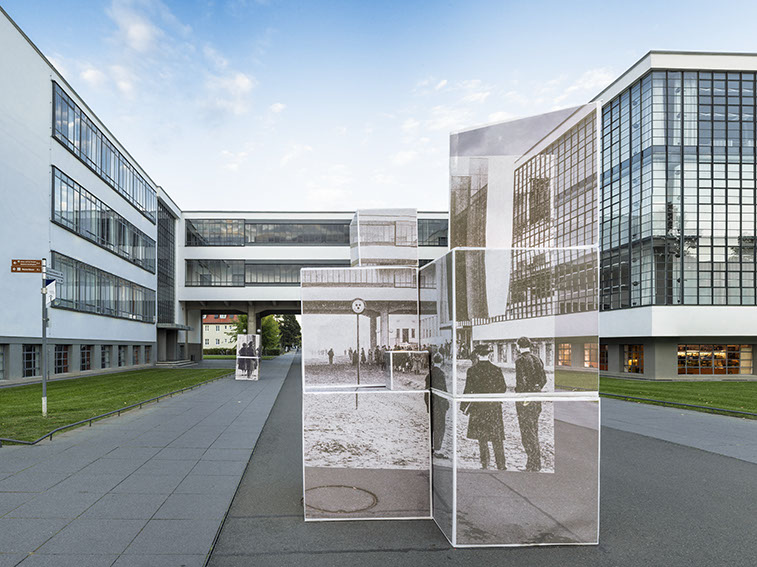
Tag der Eröffnung, Fine Art Print, 110 x 145 cm
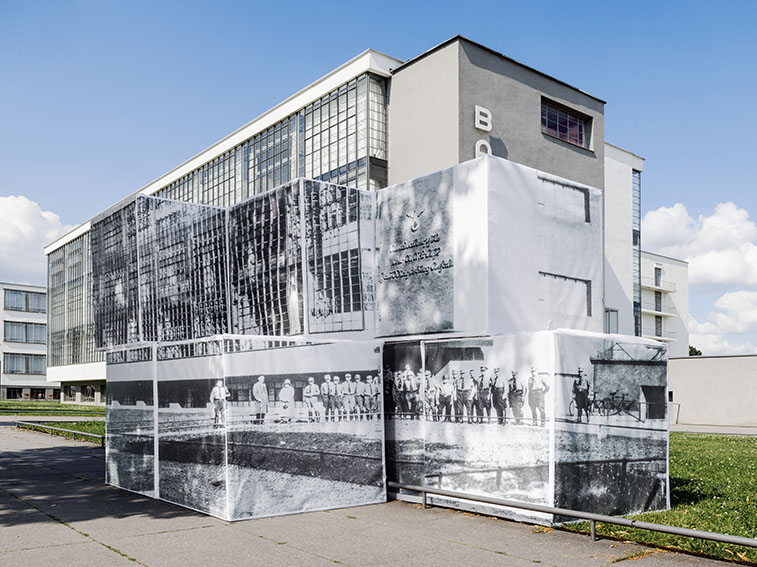
Hauptgebäude (NS), Fine Art Print, 110 x 145 cm

Prellerhaus, Fine Art Print, 110 x 145 cm
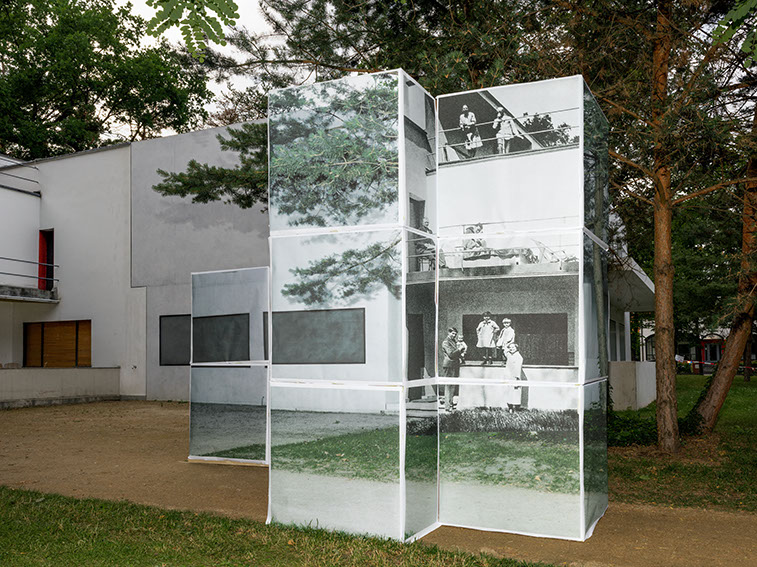
Moholy Nagy, Fine Art Print, 110 x 145 cm
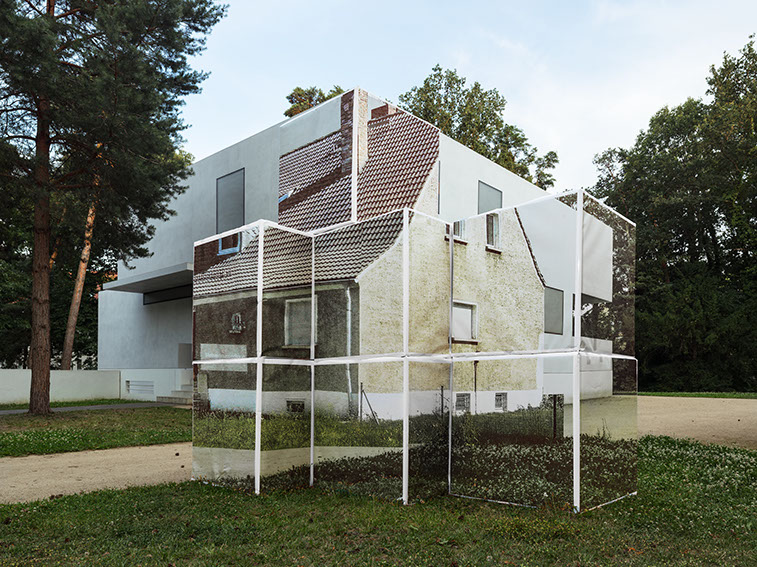
Gropius 01, Fine Art Print, 110 x 145 cm

Gropius 02, Fine Art Print, 110 x 145 cm

Hannes Meyer mit Studenten auf Mensaterrasse, Fine Art Print, 110 x 145 cm
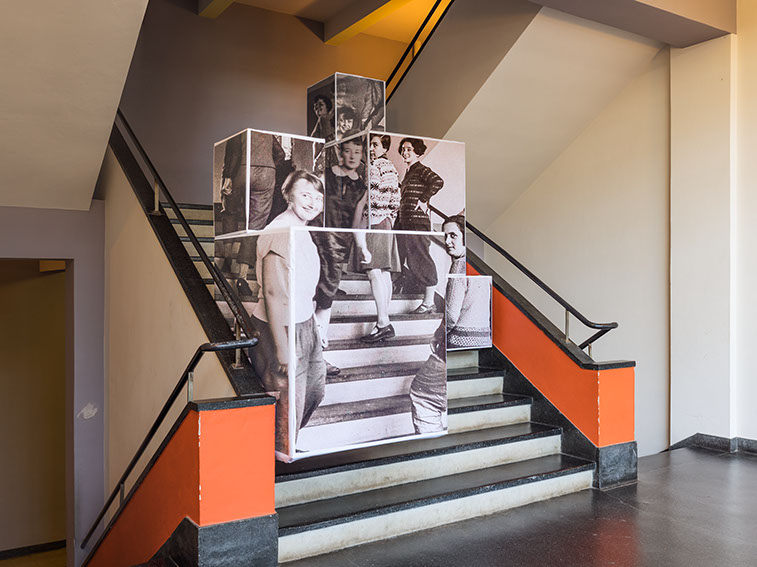
Die Bauhausweberinnen, Fine Art Print, 110 x 145 cm
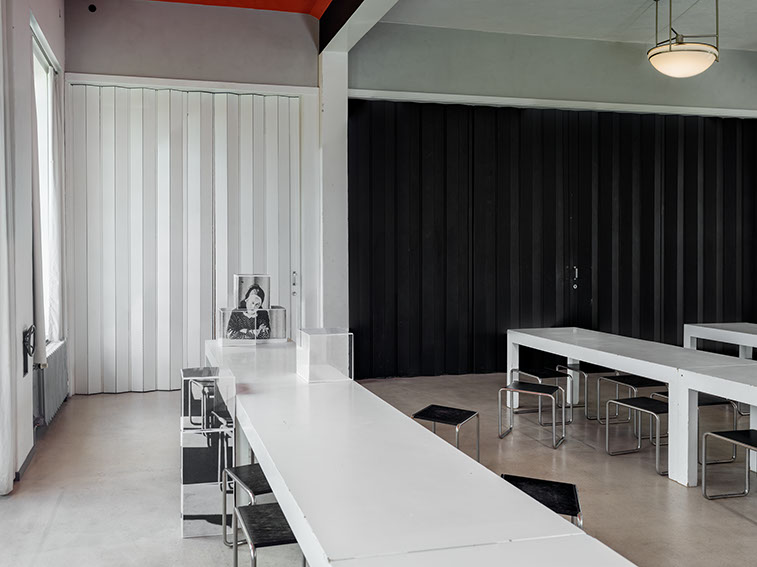
Otti-Berger, Fine Art Print, 110 x 145 cm
Size comparison and ratio, 2018
Five images (seen here in sequence) show a seemingly always the same section of a room installation with two suspended photos.
The photos show a chair and a pencil sharpener. Two objects whose purpose and size are understood cross-culturally. The first picture shows the installation view in which the chair is
shown on a scale of 1:1. The last image shows the pencil sharpener in its original scale.
With each of the five images in the series, the side lengths of the photos halve.
Not the images chair and pencil sharpener provide information about their scale of reproduction,
but the walls and floor surrounding them.

5 Fine Art Prints, each 50 x 50 cm
The great fireplace room I-III, 2014, 2015, 2016
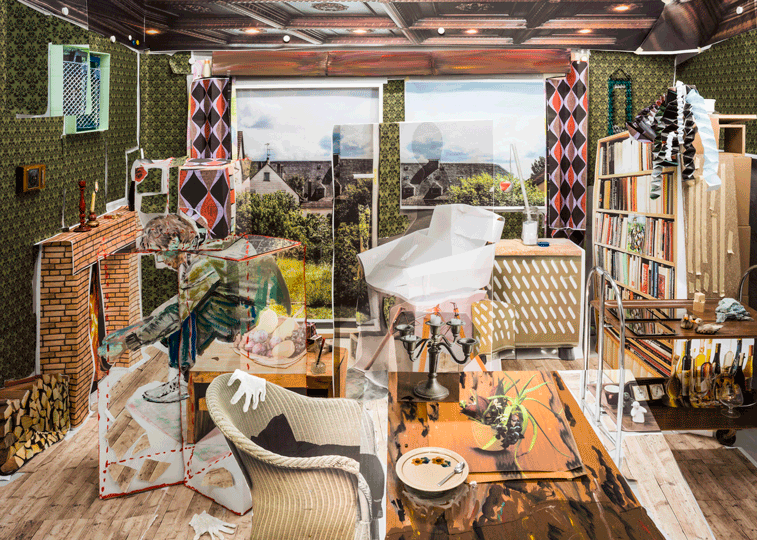
fine art print in a wooden frame, 97 x 120 cm
Download PDF (0,6 MB):The great fireplace room - an analysis with details
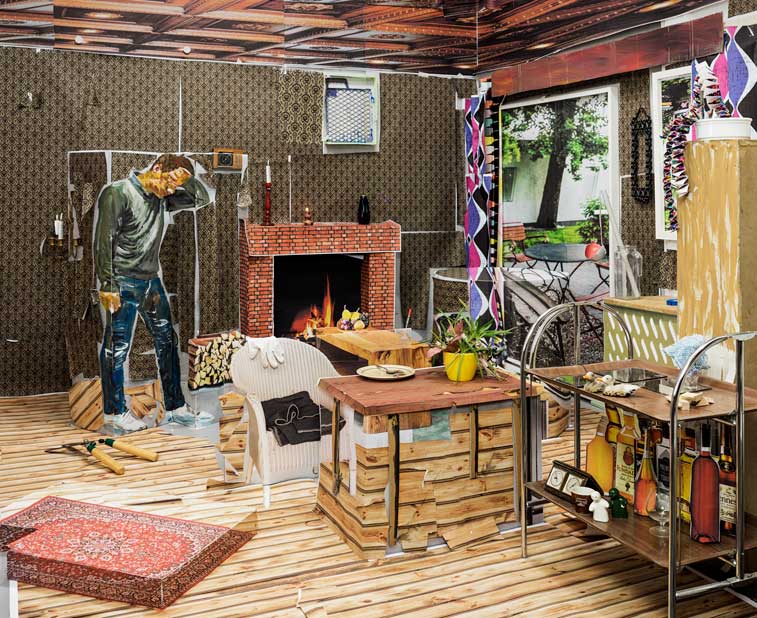
fine art print in a wooden frame, 97 x 120 cm

fine art print in a wooden frame, 97 x 120 cm
Kundmanngasse 19, 2015
In 1925 Margaret Stonborough Wittgenstein commissioned the architect Paul Engelmann to construct a representative urban mansion in Vienna.
In 1926 her brother, the philosopher Ludwig Wittgenstein, became involved in the design process and assumed responsibility for most of the planning.
After almost four years of
construction, in late 1928 Margaret, her family and numerous servants took up residency in Haus Wittgenstein. Virtually every major and minor figure of the Viennese cultural
scene at the time were guests of hers at some point. With the exception of a 7-year exile in the United States, Margaret would live in Haus Wittgenstein until her death in 1958.
Ludwig Wittgenstein planned the construction of the house between the composition of his two main philosophical works, the theories of which are unmistakeably recognizable in the
architecture.
The Haus Wittgenstein is in this sense an architectural manifestation of his philosophy.
Haus der Photographie Deichtorhallen, Hamburg

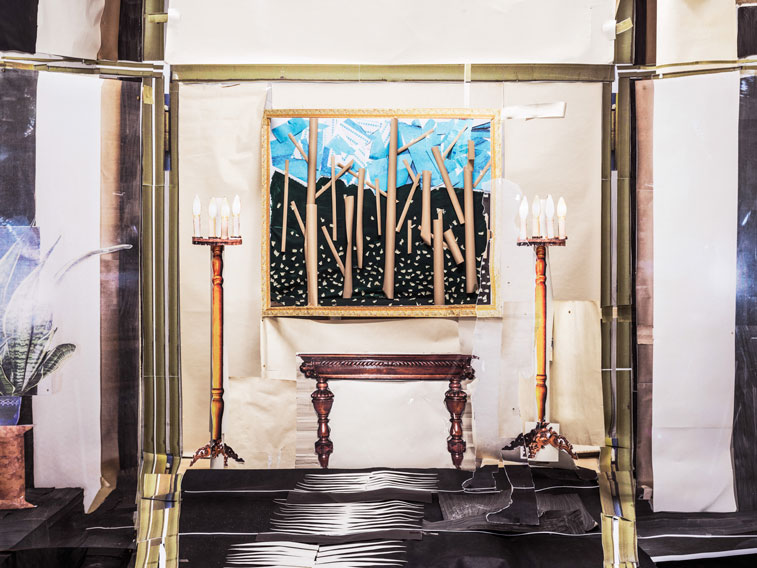
Kundmanngasse 19 - Halle, glass framed fine art print, 105 x 140 cm
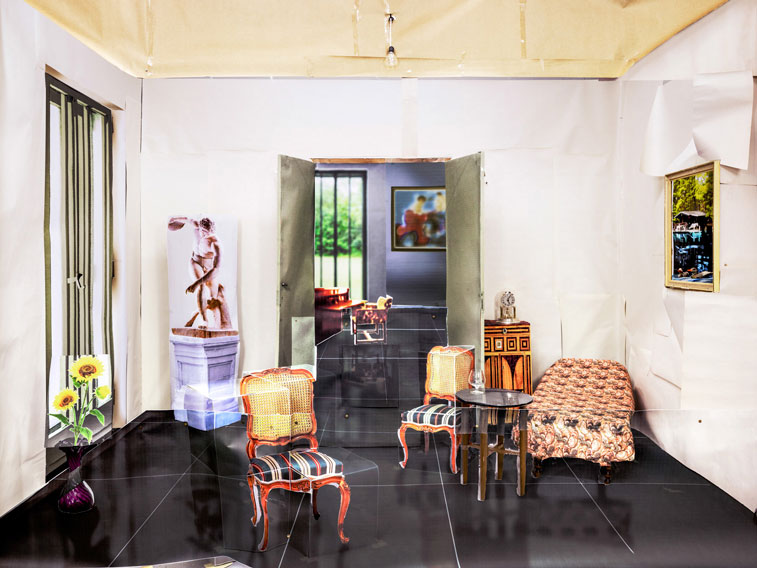
Kundmanngasse 19 - Saal I, glass framed fine art print, 105 x 140 cm
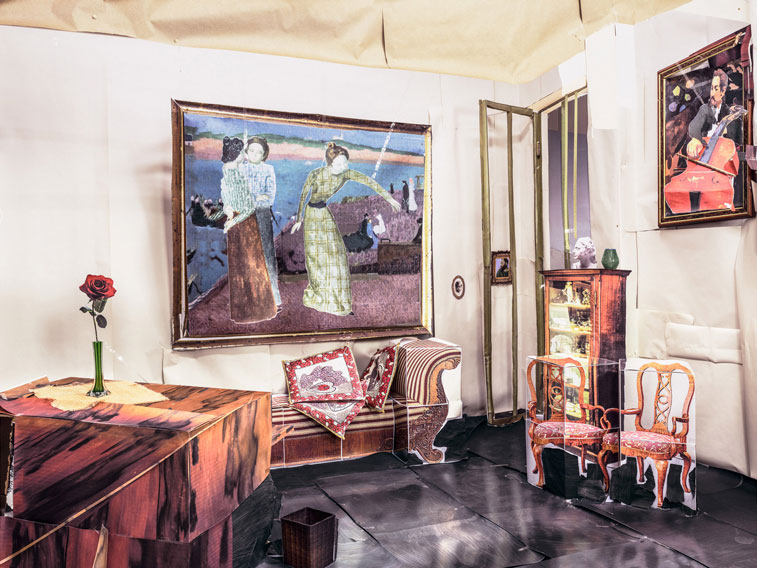
Kundmanngasse 19 - Bibliothek, glass framed fine art print, 105 x 140 cm
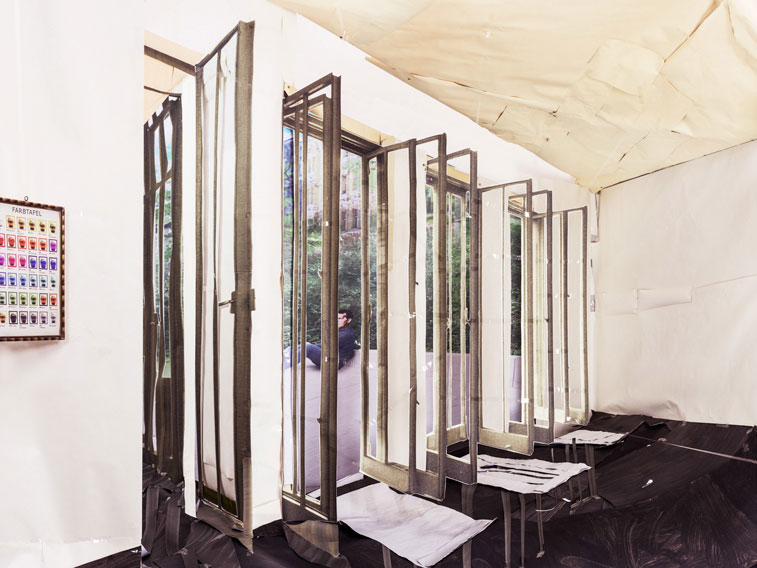
Kundmanngasse 19 - Speisezimmer, glass framed fine art print, 105 x 140 cm
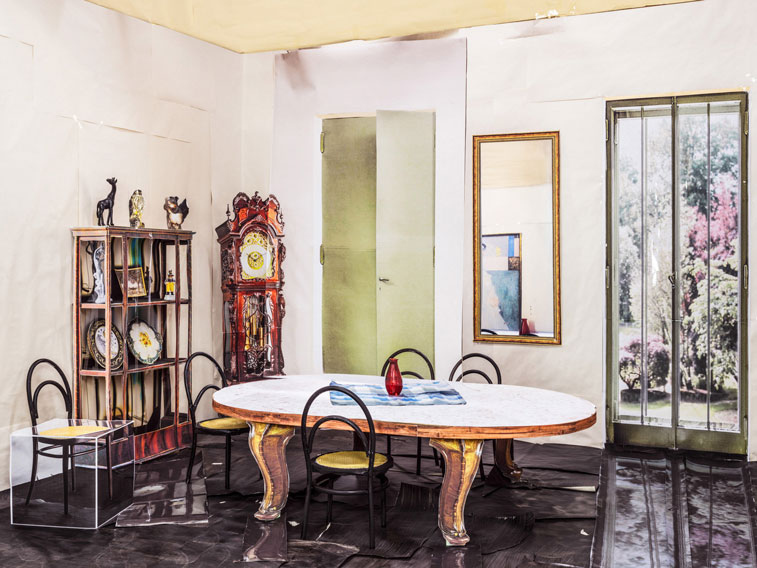
Kundmanngasse 19 - Saal II, glass framed fine art print, 105 x 140 cm

Kundmanngasse 19 - Wohnzimmer, glass framed fine art print, 105 x 140 cm
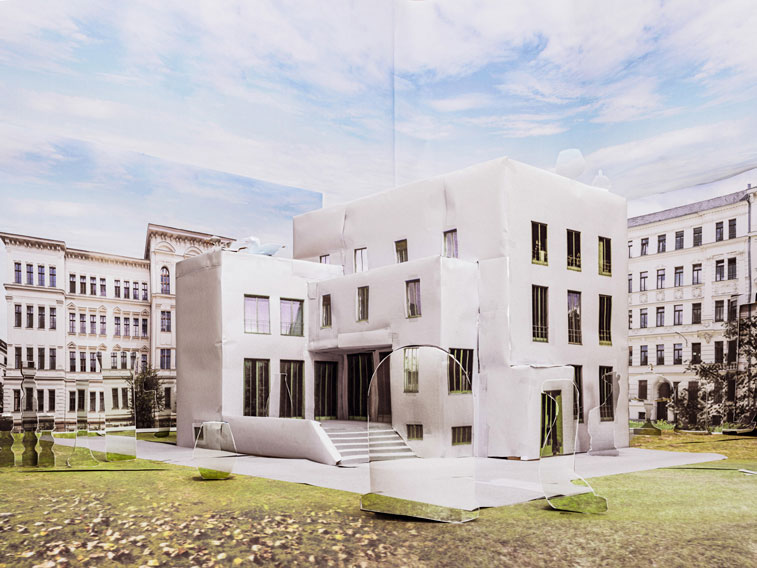
Kundmanngasse 19 - Palais Südseite, glass framed fine art print, 105 x 140 cm
256 kB.jpg hexadecimal of itself, 2014
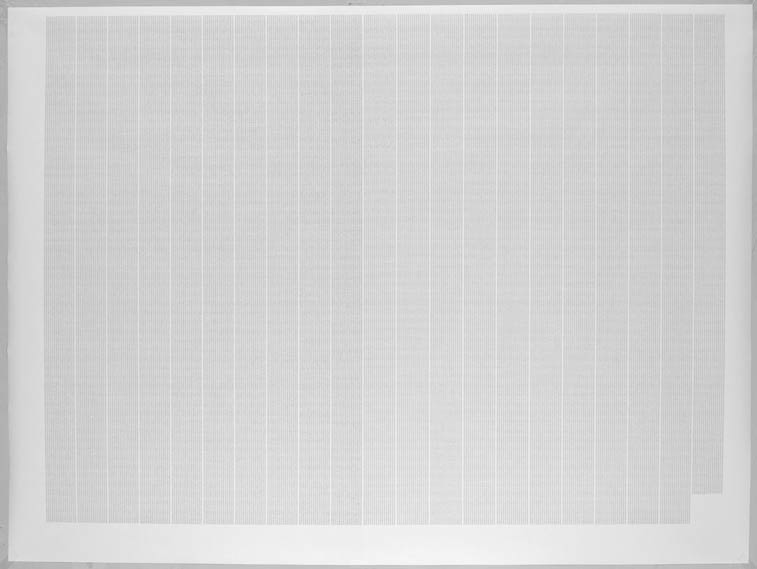
256 kB.jpg hexadecimal of itself, inkjet print, 61 x 82 cm

Detail
The image and his ideational object, 2013/2014 (selection)
Installation views, E-Werk, Freiburg

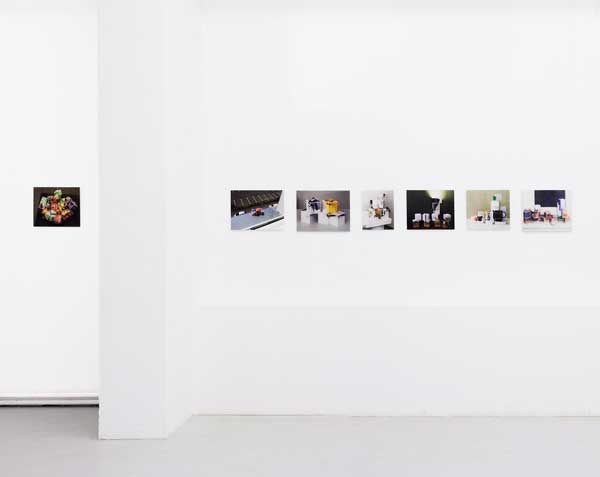
According to Plato's "theory of Forms", everything material that we perceive is only the image of a "higher", metaphysical idea. We cannot grasp this original state of all things with our senses. We perceive the world as it is NOT, but perhaps could be. We therefore do not perceive the world as it is, but see images of the "things in themselves" in different states. more...
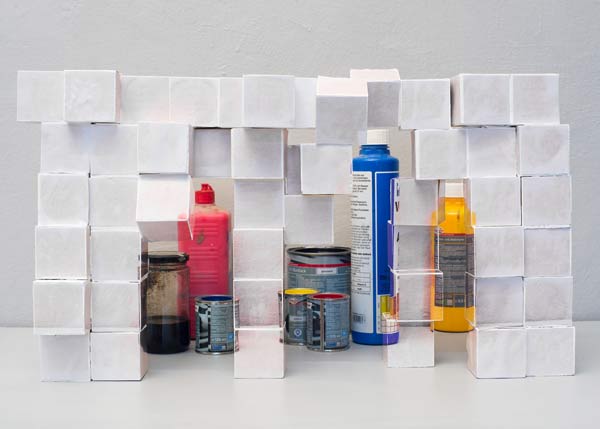
fine art print on dibond behind acrylic glass, 30 x 40 cm
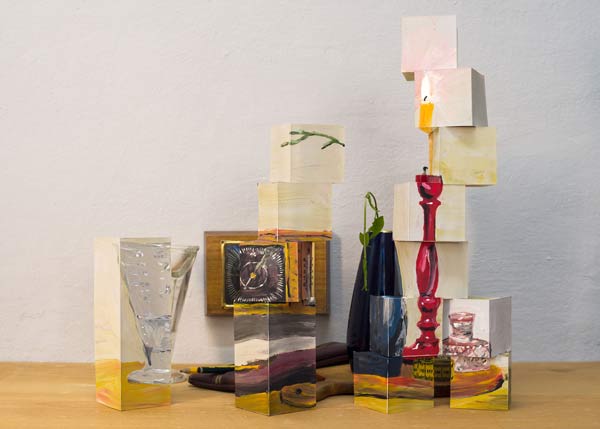
fine art print on dibond behind acrylic glass, 30 x 42 cm

fine art print on dibond behind acrylic glass, 30 x 35 cm
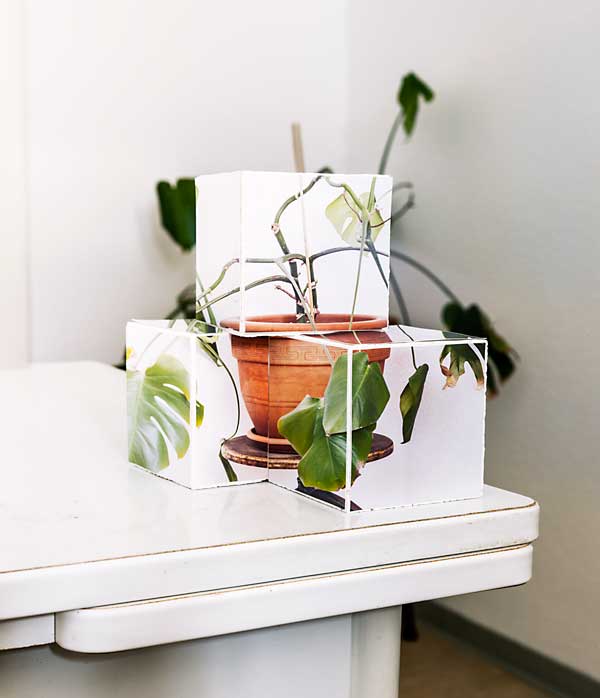
fine art print on dibond behind acrylic glass, 30 x 25,5 cm

Detail
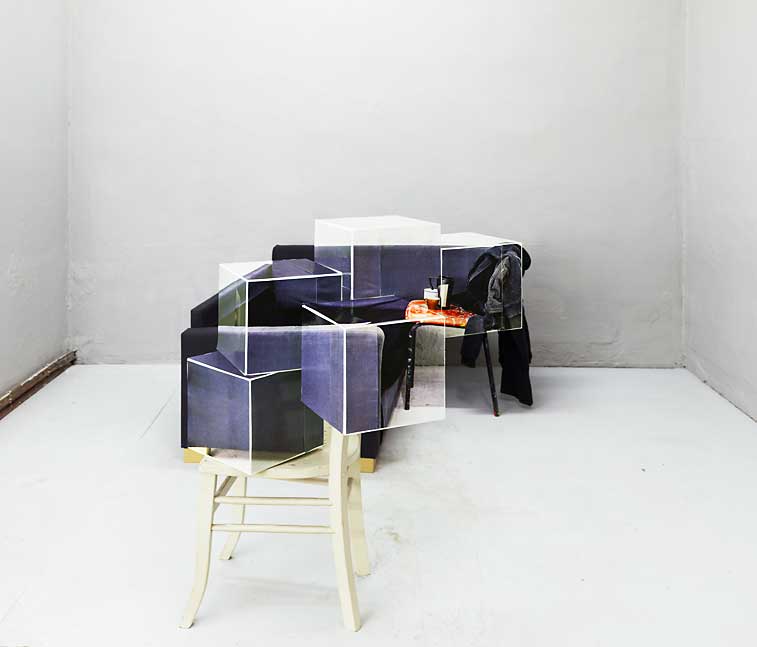
glass framed fine art print, 70 x 80 cm

glass framed fine art print, 70 x 95 cm
Making-of:
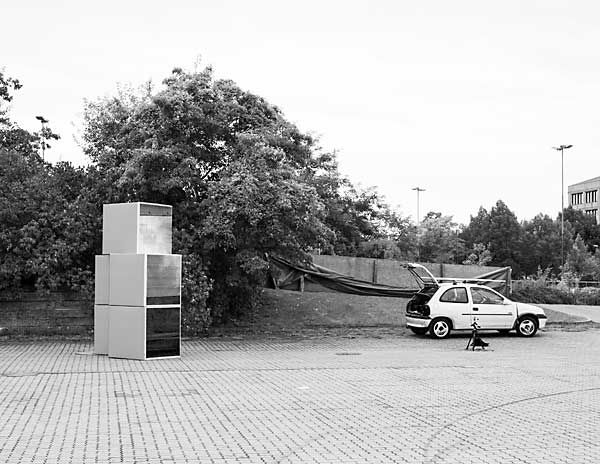
Panhorama, 2012
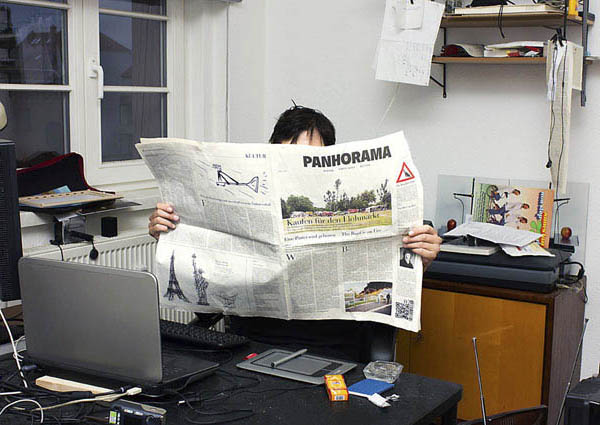
Download PDF (4MB):PANHORAMA (Webansicht)
Installation view Gallery Queen Anne, Leipzig
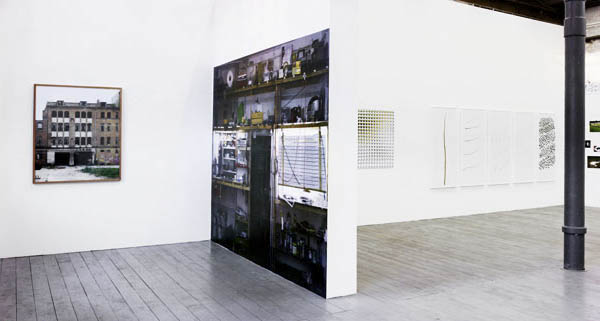
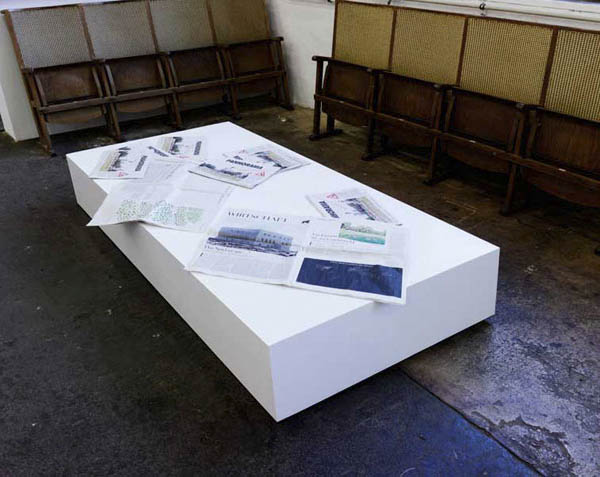
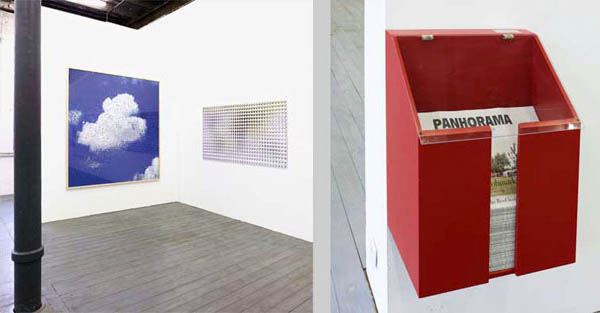
Cloud, 2012
The work „Cloud“ is an abstract representation of self-similarities within cloud structures. The image dissolves into increasingly minute details that show the same picture or parts of the same cloud over and over again.
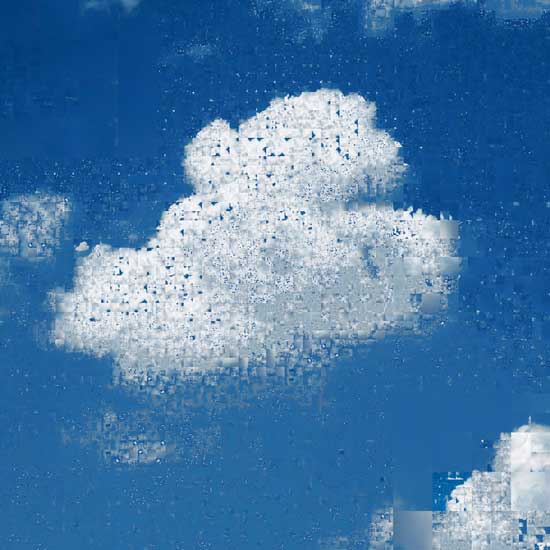
C-Print, 200 x 200 cm
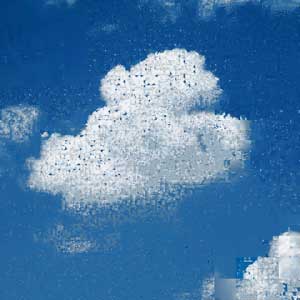
Detail
World, 2012
In cartography a map projection is the representation of a three-dimensional sphere (for example, the Earth) on a two-dimensional surface, which is referred to as a coordinate reference system. The representation of a sphere on a two-dimensional surface is also often simply called a projection. more...

C-Print on Dibond behind acrylic glass, 100 x 200 cm
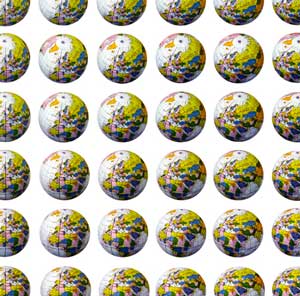
Detail
Tree, 2011
Installation view, c-prints, framed, each 150 x 65 cm
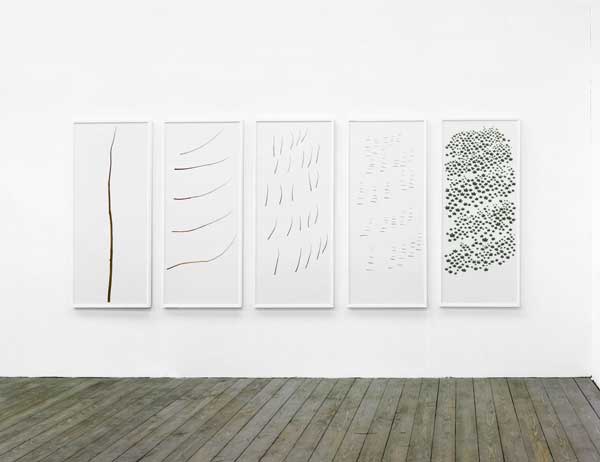
You can see a tree, divided into its units, defined by orders.
Starting with the trunk, in first order on the first picture, the branches follow in second, third and fourth order
on the next pictures. In the fifth picture, the leaves are in fifth order. Branches and leaves are arranged schematically
as a model illustration of the tree, the scale of all units is 1:2.
The work shows the fractal structure of the tree. From the trunk, its branches and each additional branch five units of the following
following order. In this case the tree is a small maple of three meters height, which is structured in five orders.
This results in a function over which the number of units in the consecutive orders is the
respective power of their ordinal number to the number five.
Starting with ordinal number 0, this tree thus has five to the power of four = 625 leaves.
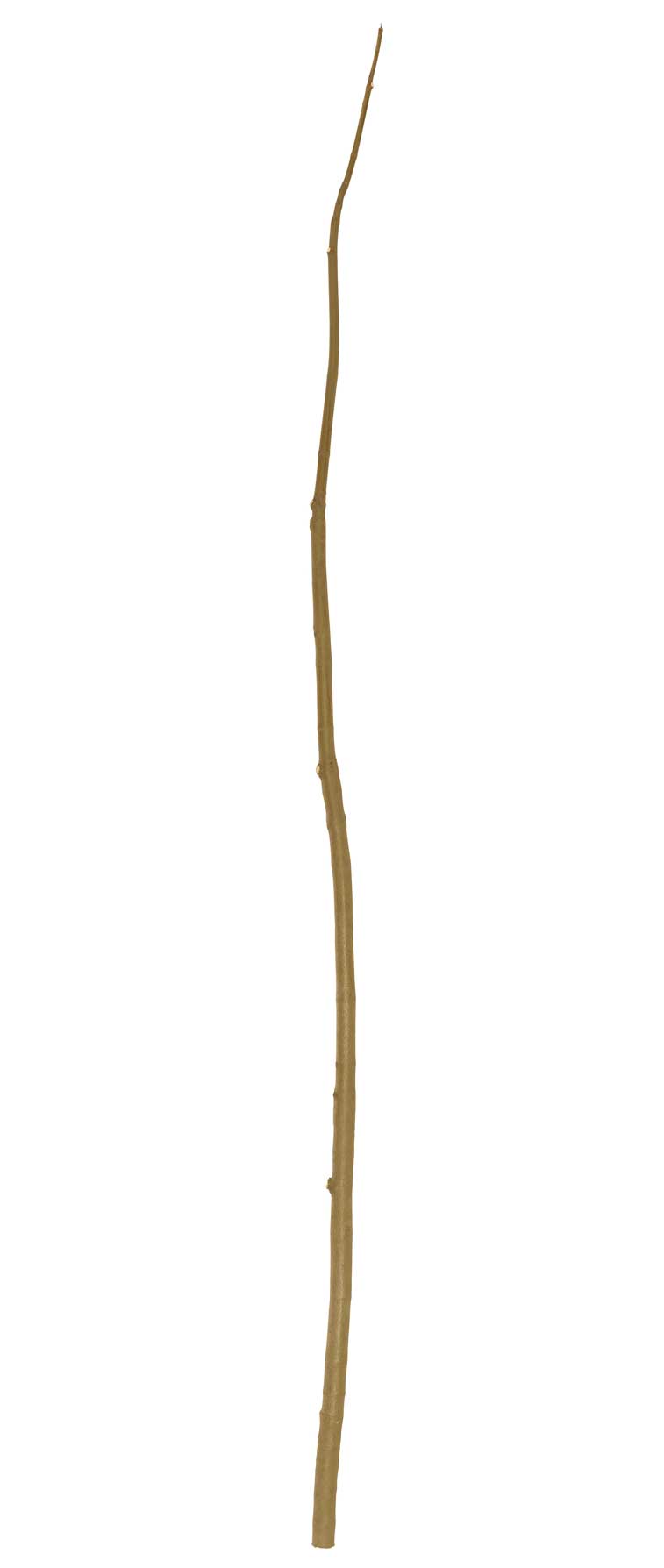
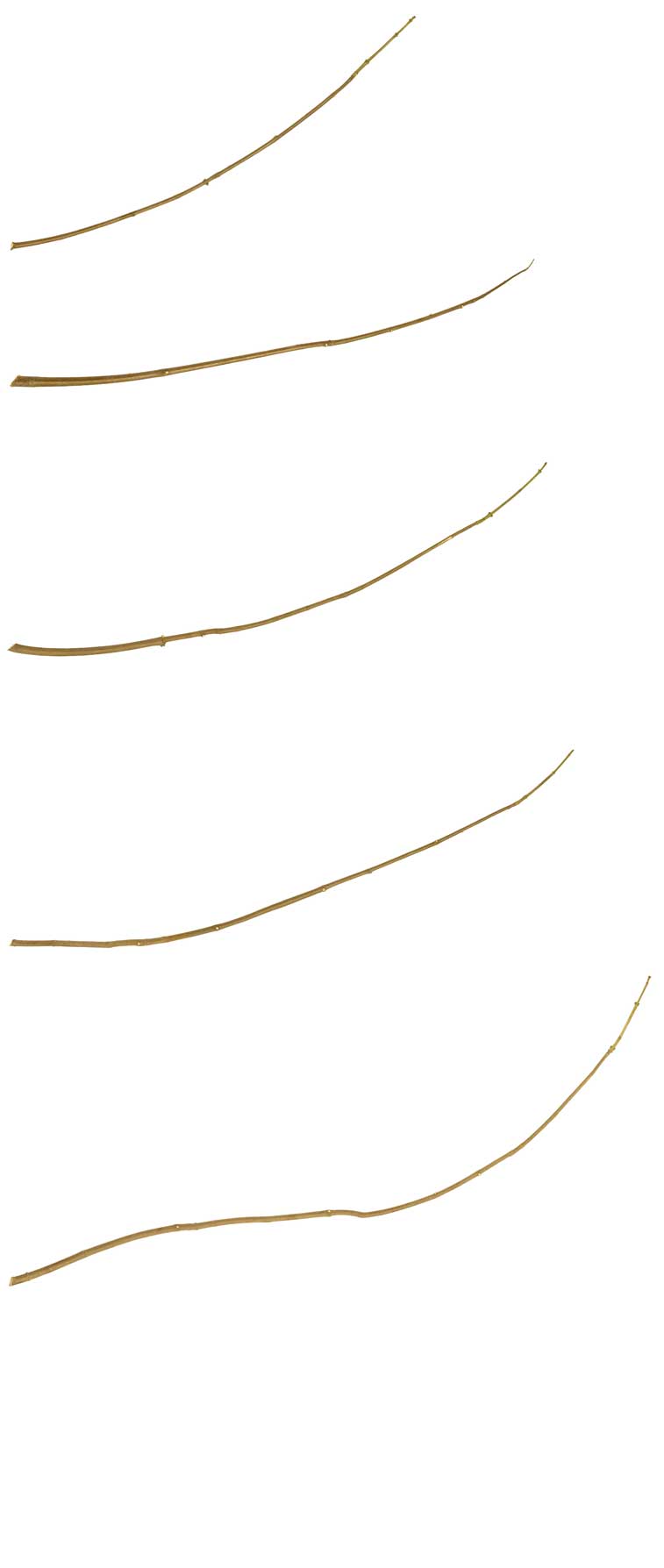
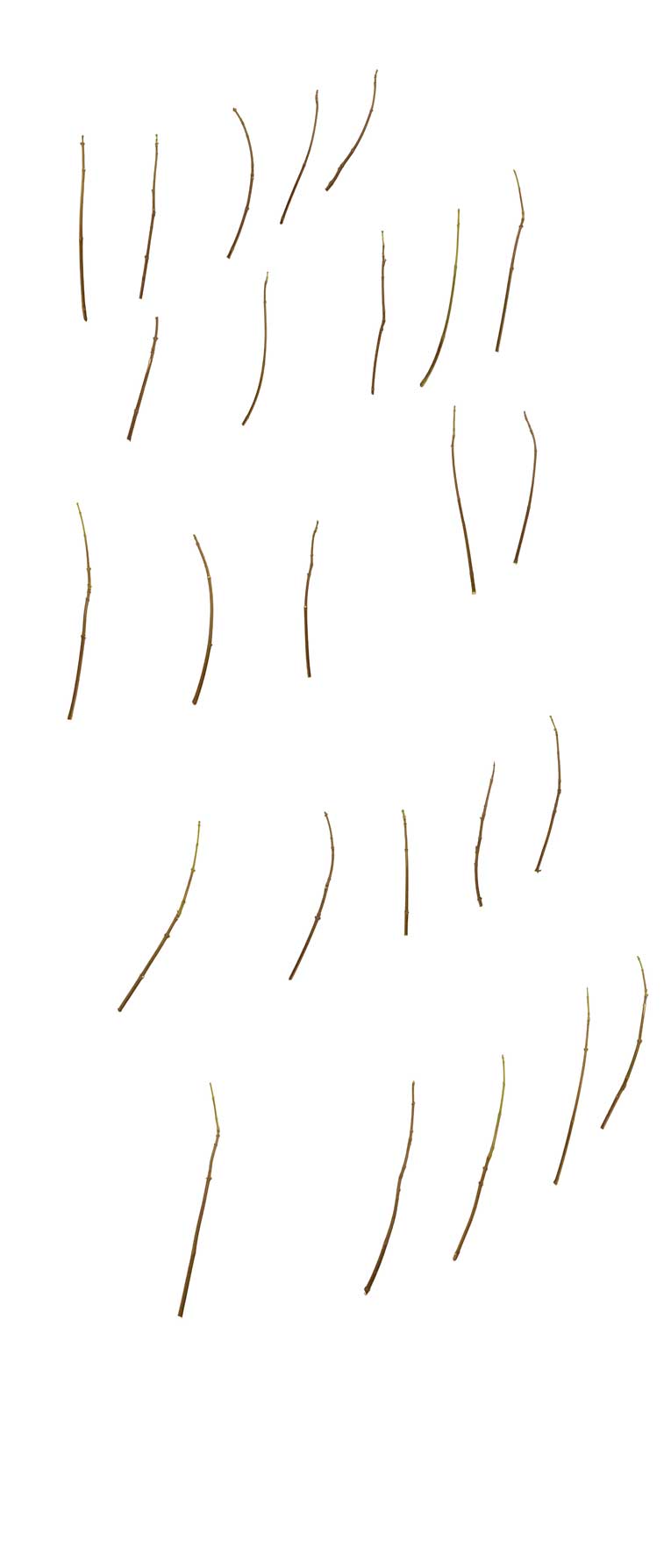
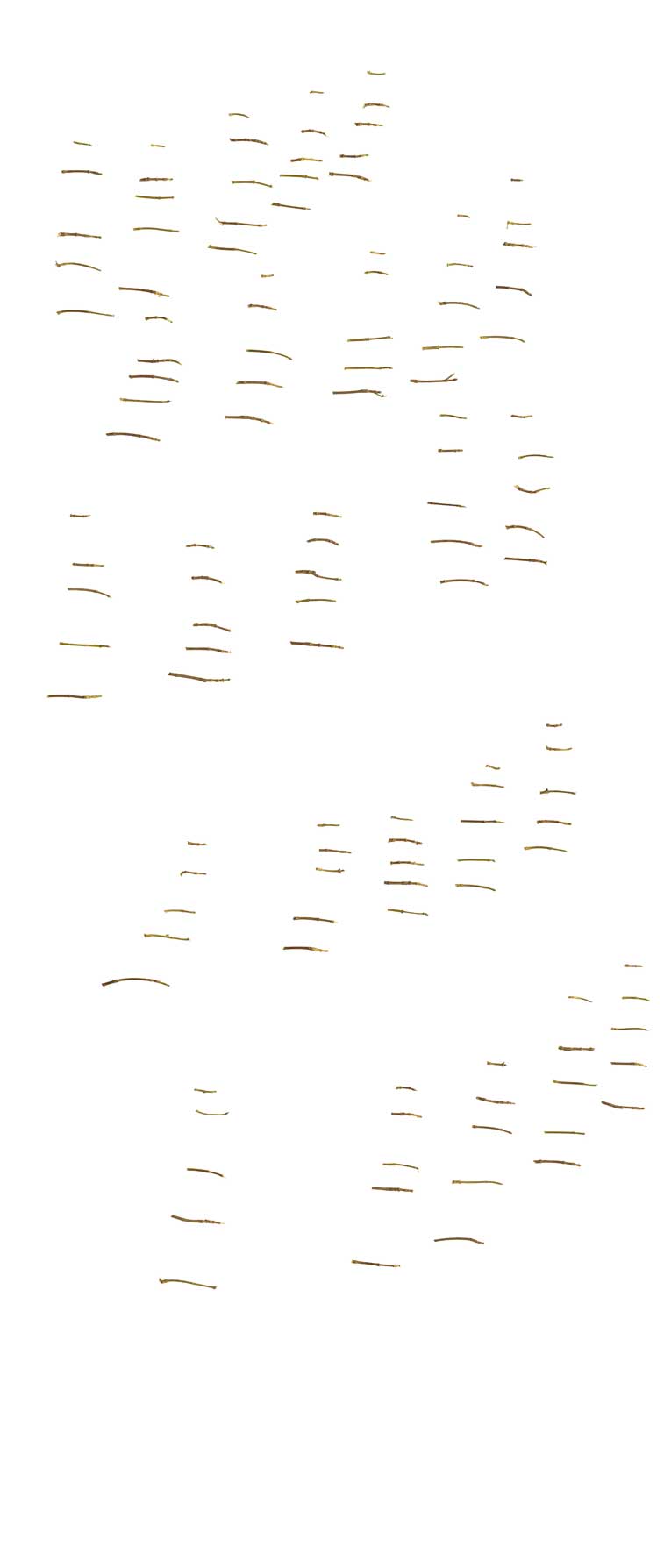
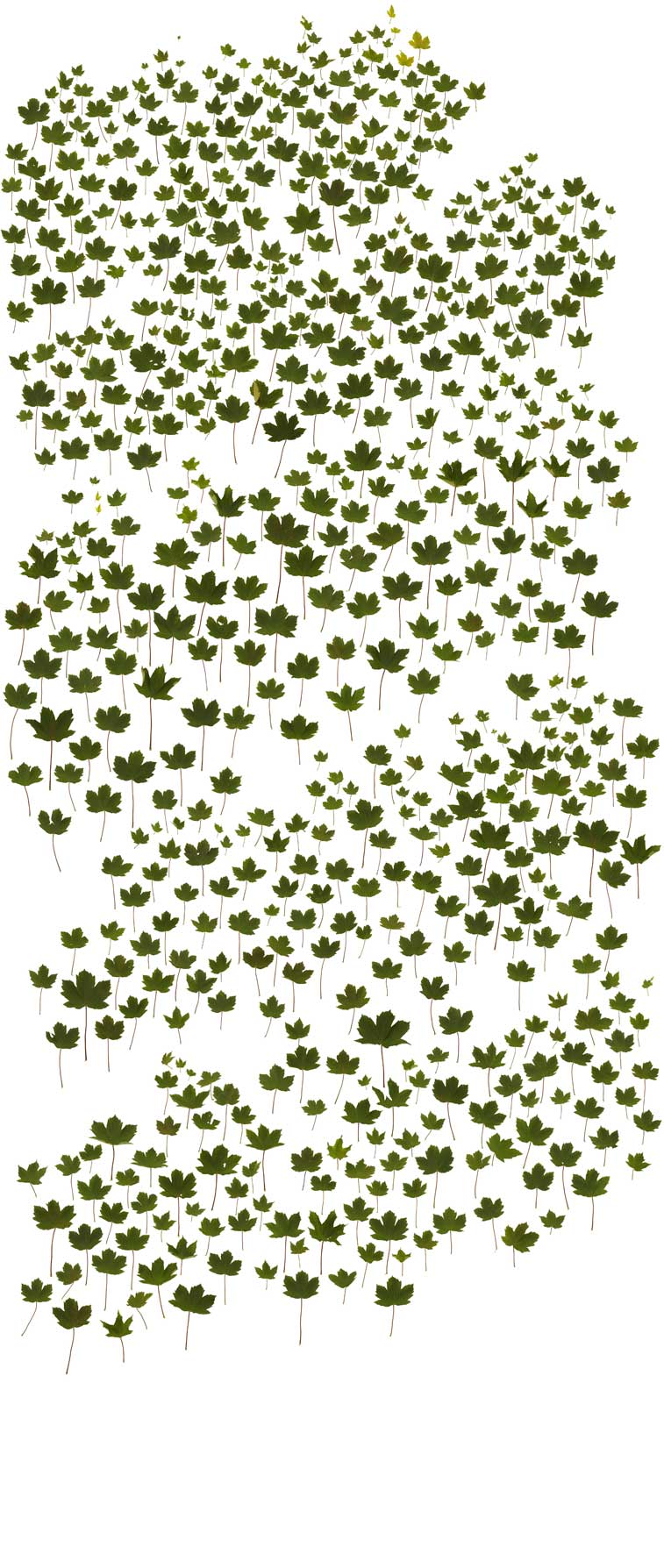
in situ, 2009
Installation view Gallery Quartier, Leipzig
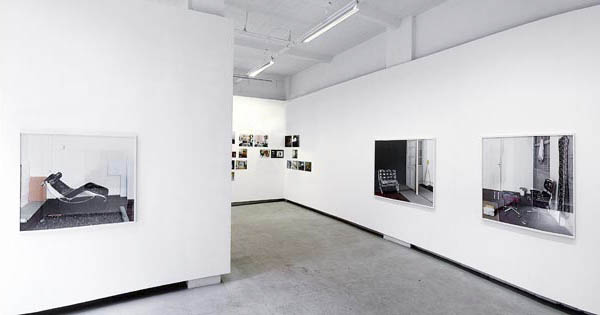
Installation view Deichtorhallen, Hamburg
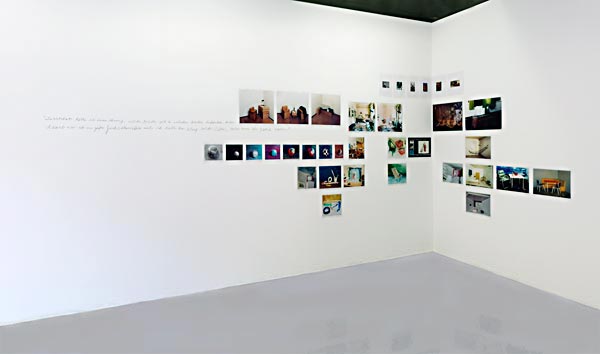
Archaeology on site is all about reinstating objects in their present condition to something of their potential, even of their aspirations originally revealed in the archaic context. What was simply in existence until the present-day can now become tangible with the full impact of its different layers. The technical term for this is "in situ".
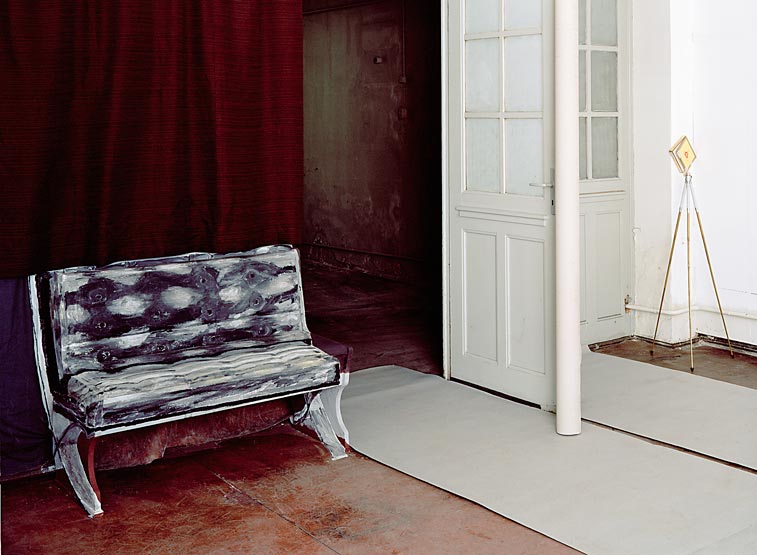
Barcelona Chair, C-Print, 90 x 122 cm
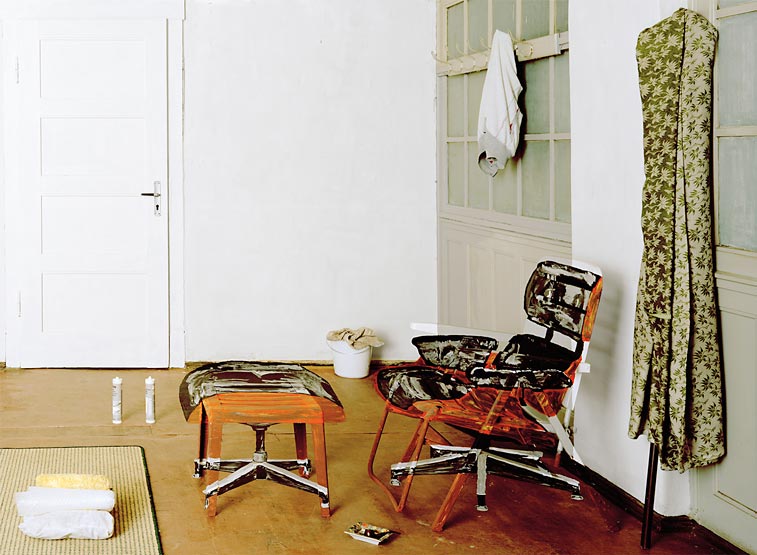
Eames Lounge Chair, C-Print, 90 x 122 cm

Detail
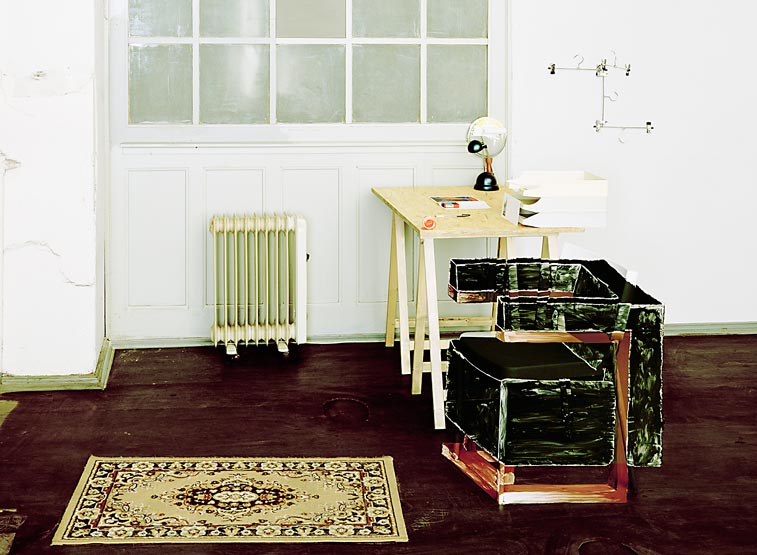
Gropius Sessel, C-Print, 90 x 122 cm
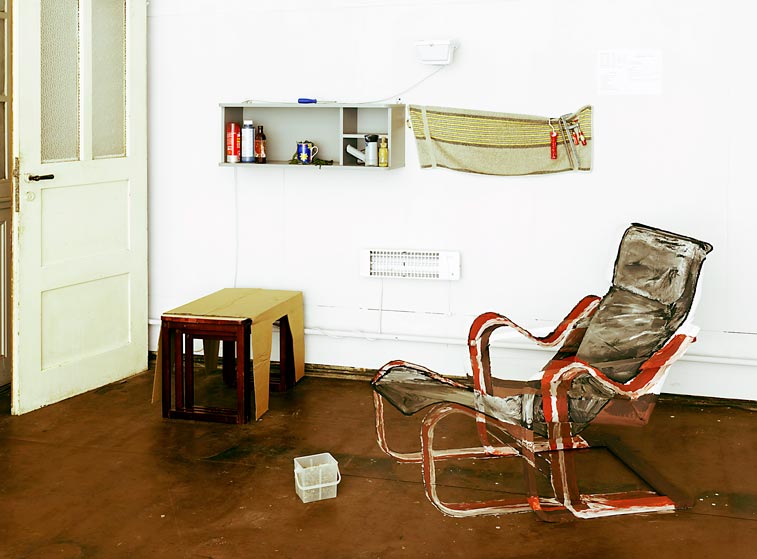
Isokon, C-Print, 90 x 122 cm
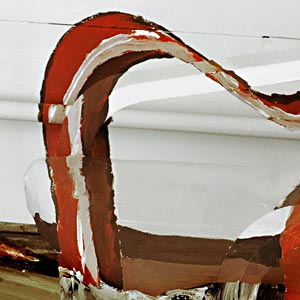
Detail

LC 4, C-Print, 90 x 122 cm
in situ – studies
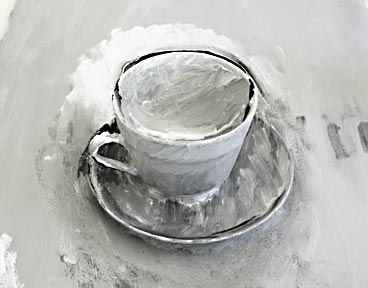
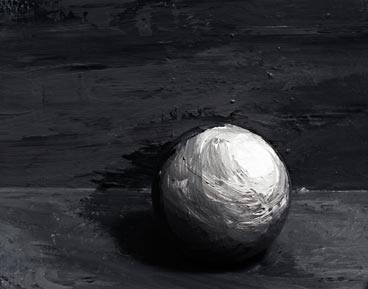
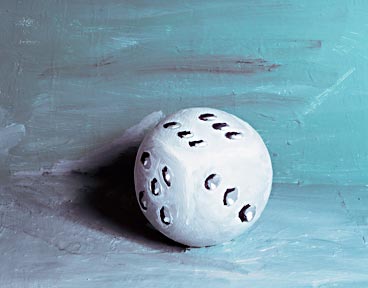
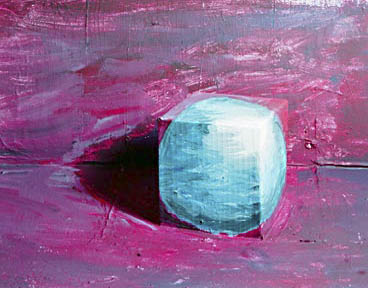
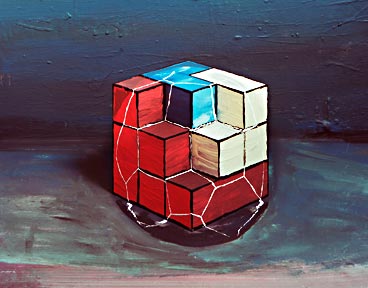
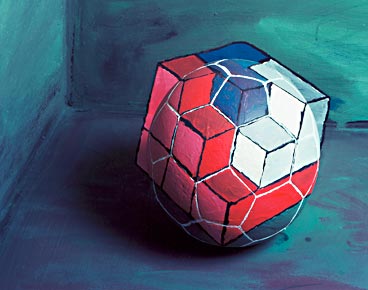
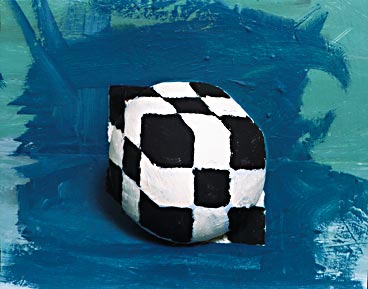

Contingency in form, 8 C-Prints, 17-24 x 20 cm
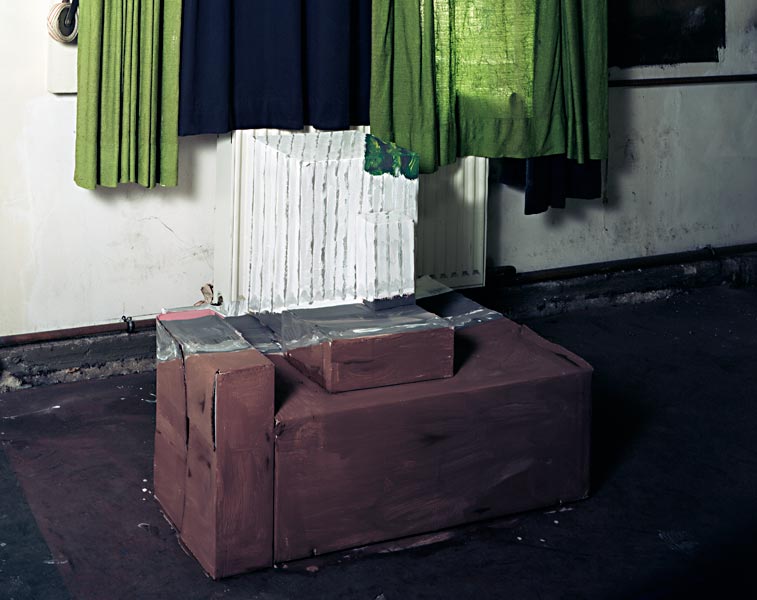
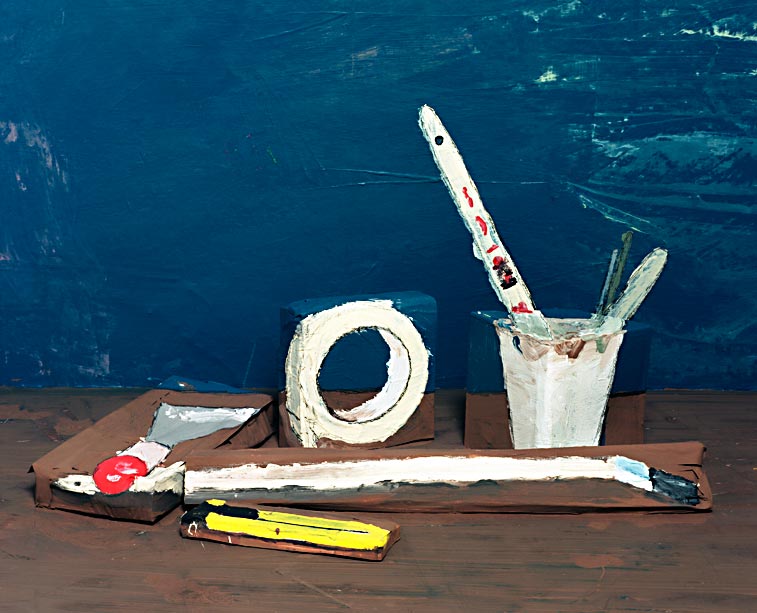
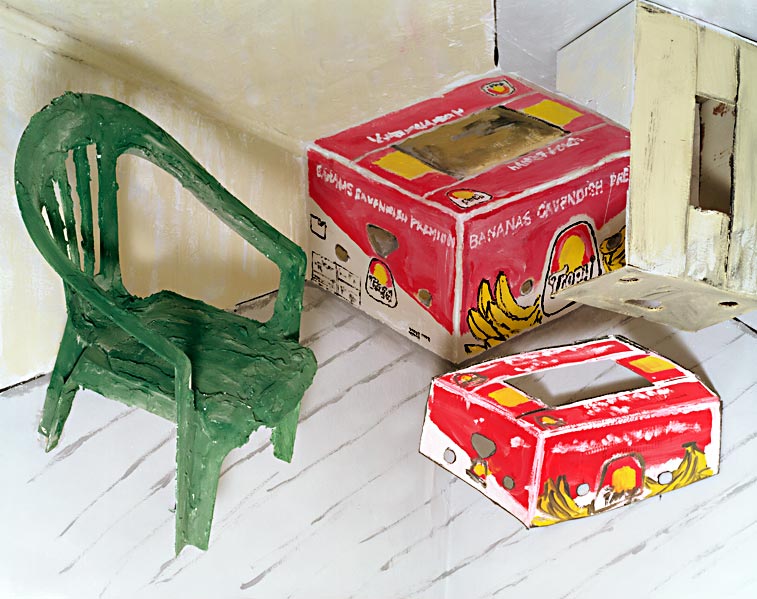
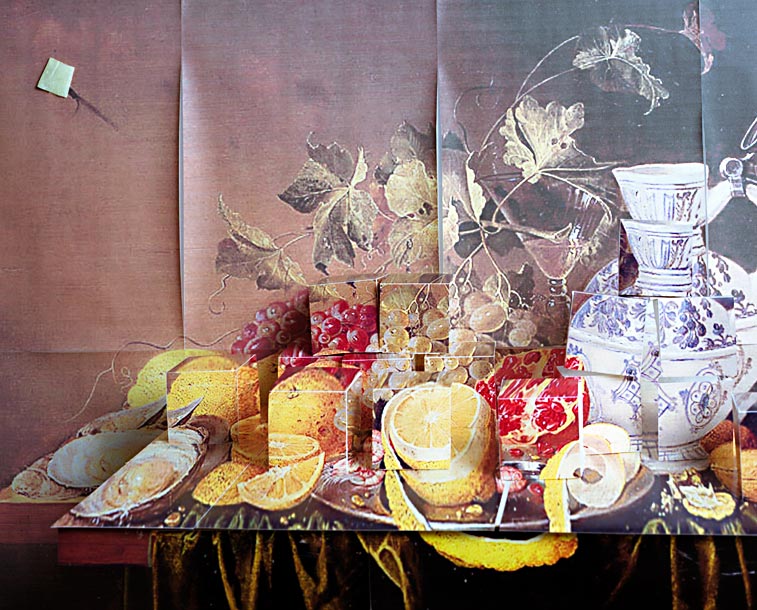
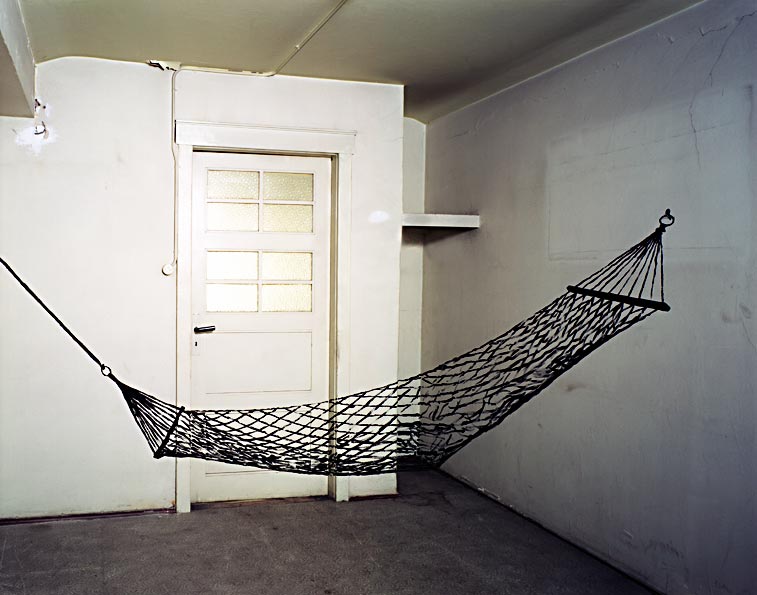
methodological studies, 16 C-Prints, 50 x 30 cm - 60 x 40 cm
1000 photometric measurements in lux of a burning candle before a white wall taken with a Gossen Multisix exposure meter, 2009
The image entitled „1000 photometric measurements in lux of a burning candle before a white wall taken with a Gossen Multisix exposure meter‟ measures 84 x 65 centimetres. The surface is a white wall and the adjoining floor, upon which a burning candle stands. The 1000 numerical exposure values shown on part of the device’s display were scanned in their original size, arranged and printed. The sections of the display correspond in size and arrangement to the surfaces that were measured on the wall and floor. When viewing the image from a greater distance, different shades of grey emerge due to the relation of the black and grey components of the different numerals.
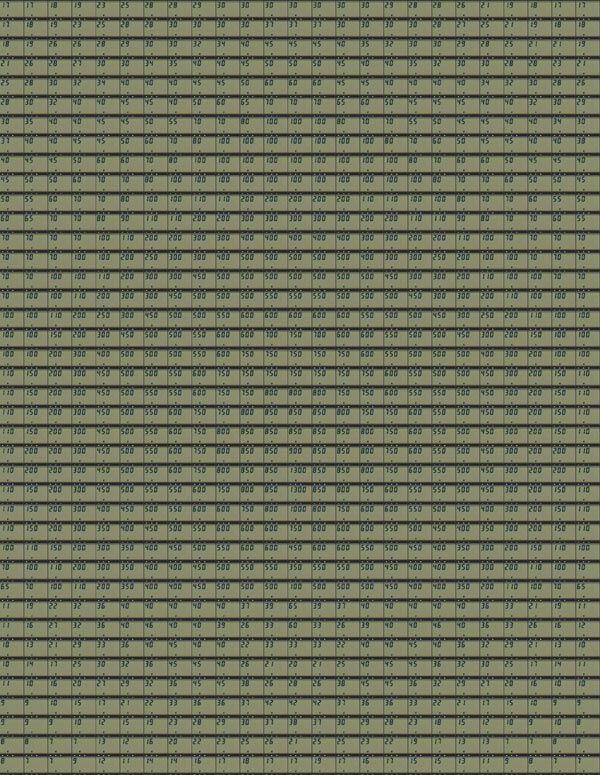
Dibond behind arcylic glass, 65 x 84 cm
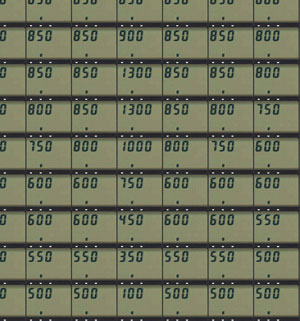
Detail
Apple ≠ Apple, 2009
In the recognition process, which transforms the representations contained in pictures of substituted objects – the concepts – back into (virtual) objects, different reference sizes come into play. In addition to similarities in form and color to the pictorial correlate, which refers as a signifying concept (significate) to the material form (signifier), contextual embedding is of great importance both in terms of the content of the image and of reception aesthetics. more...
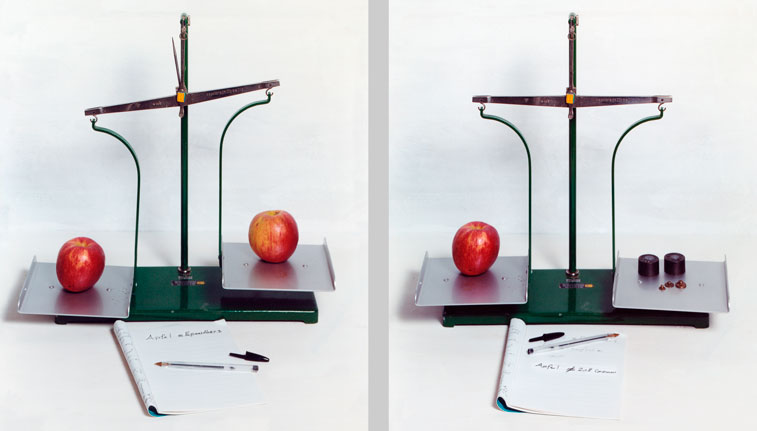
Apple = epoxy resin / Apple ≠ 256 Gramm, C-Prints on Dibond, 34 x 29 cm
Gaden, 2009
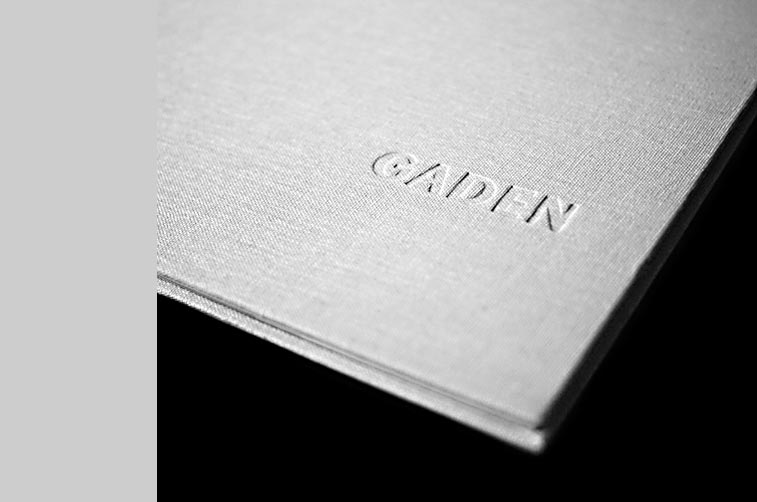
Gaden, 4/4 Euroskala Offset, 56 Pages, 29 x 23 cm, Layout: René Siegfried
In the discipline of architecture a one-room house or a single room is referred to in German as “Gaden”. A cocoon is a shell that the larvae of various insects create in order to pupate inside. As a space of rest and isolation it serves to protect from external influences.
Download PDF (1MB): Gaden
Still Lifes, 2006-2020
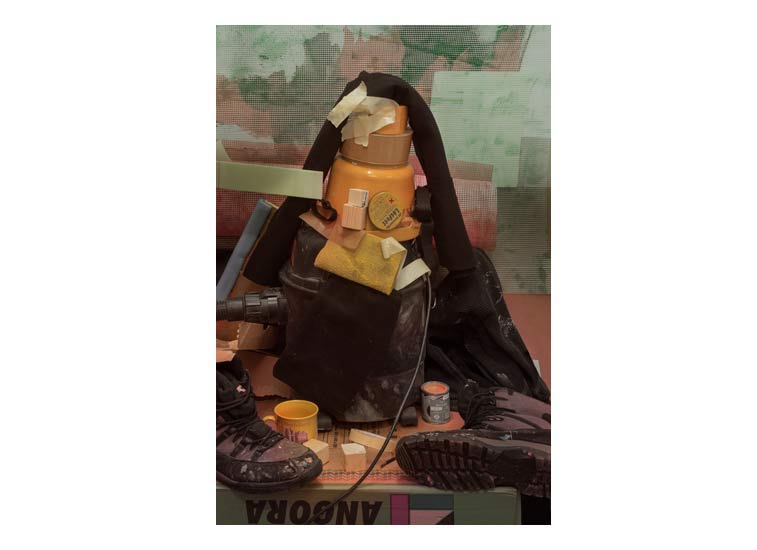
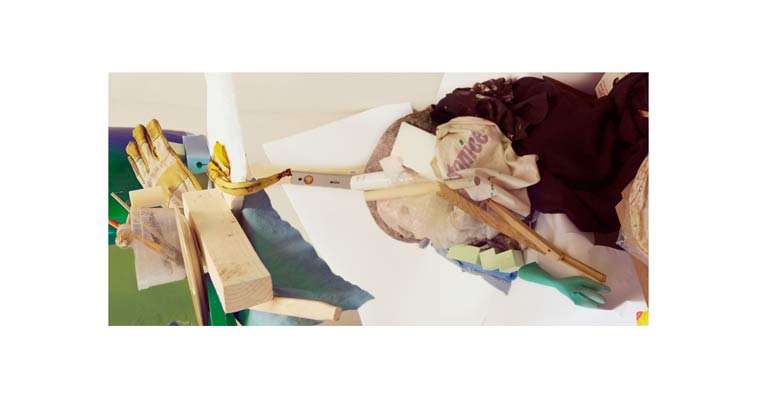

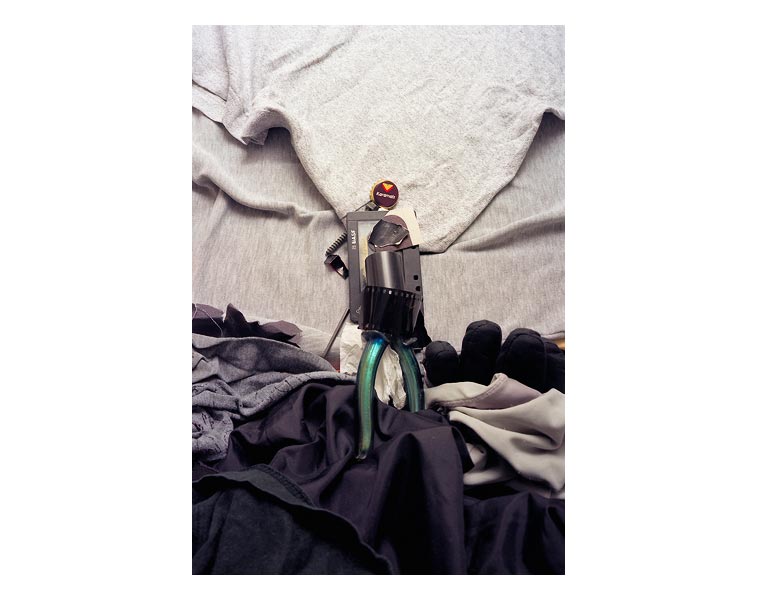
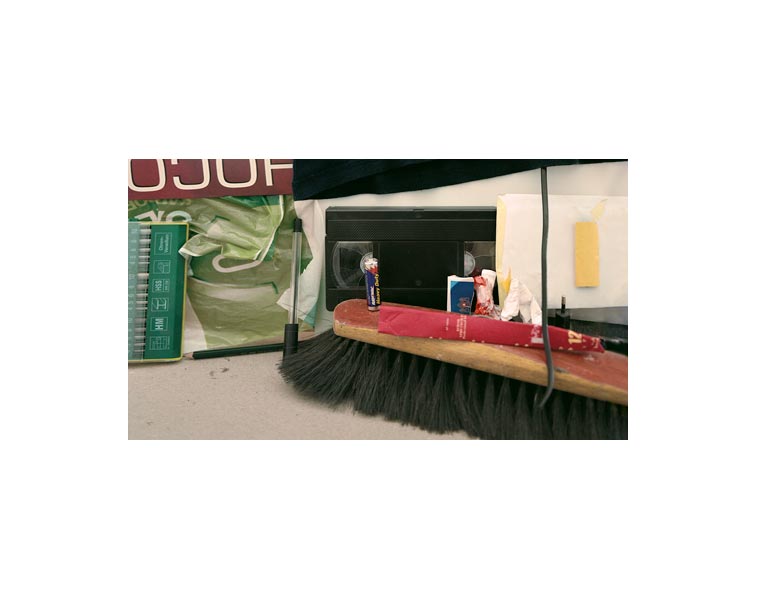
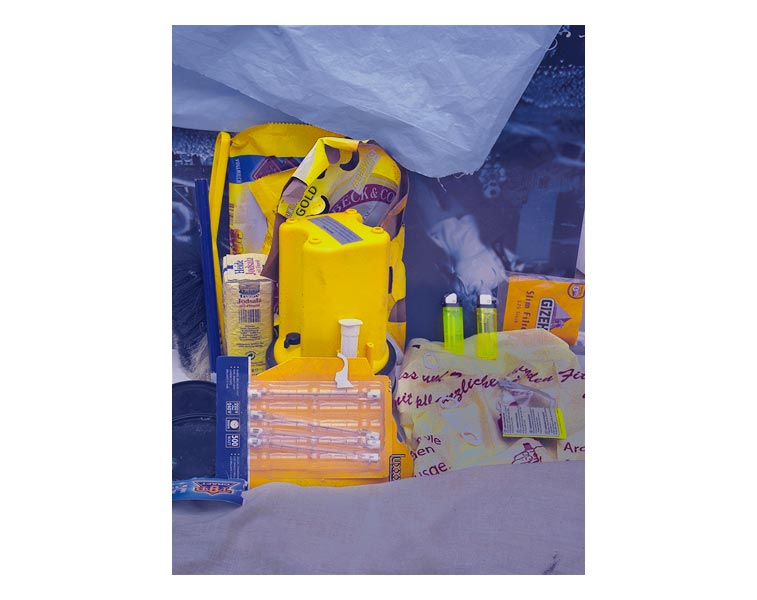
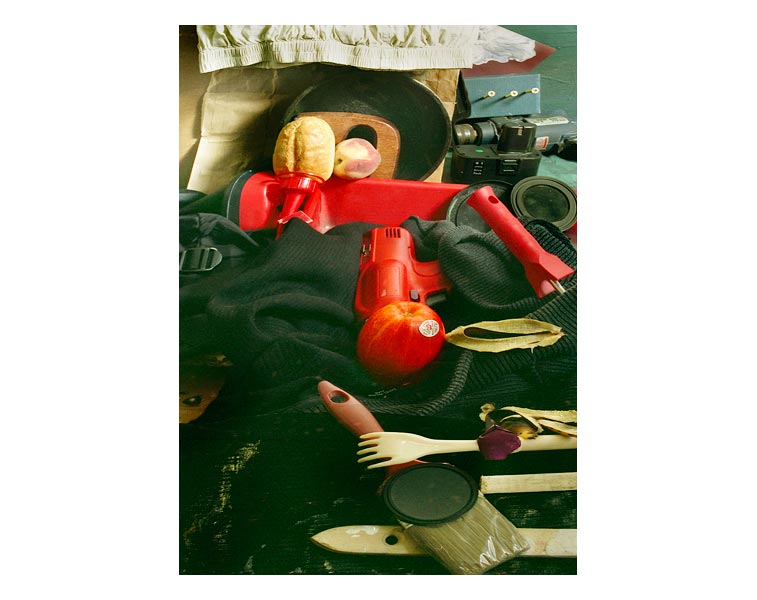
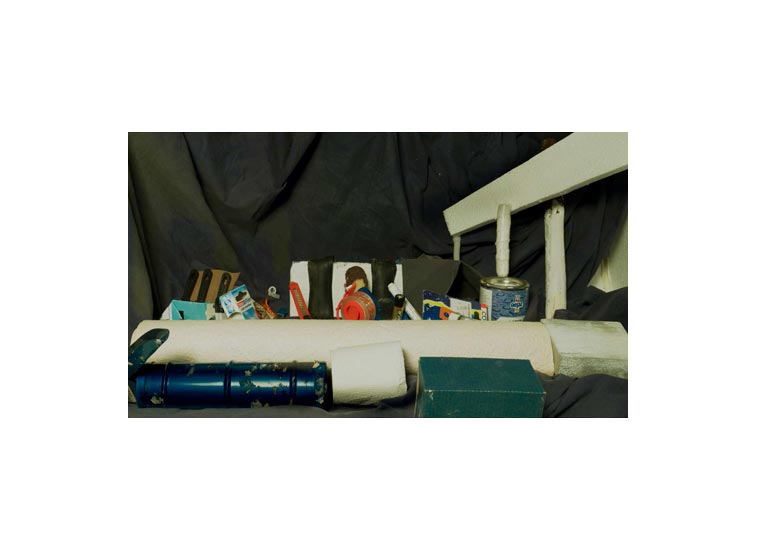
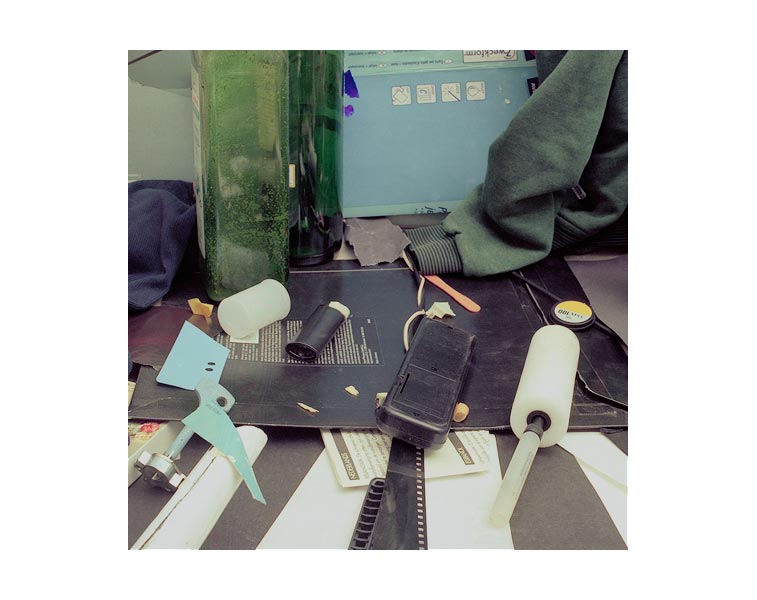
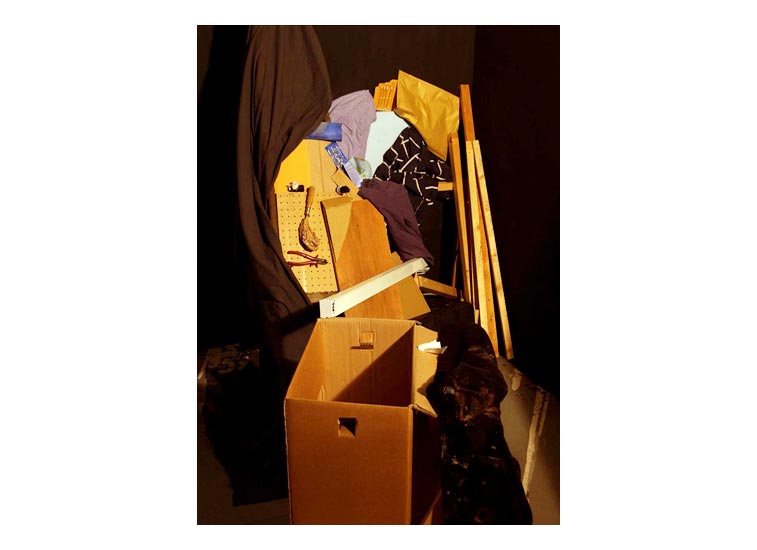
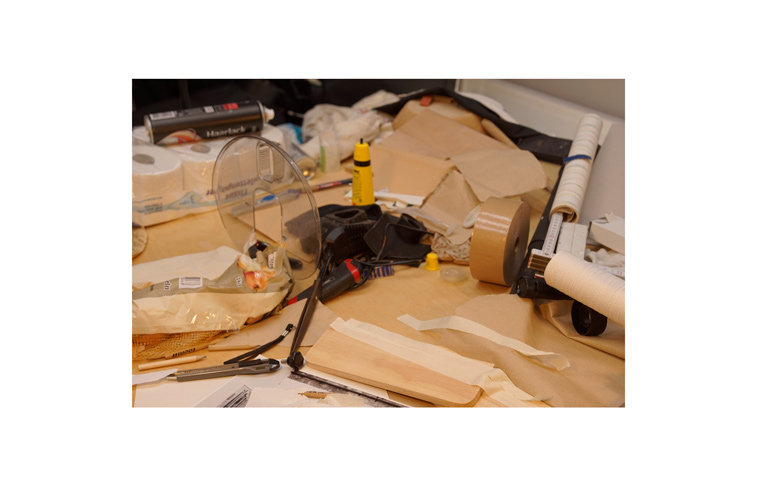

Kokon (selection), 2006
Installation view HGB, Leipzig

A cocoon is a shell that the larvae of various insects create in order to pupate inside. As a space of rest and isolation it serves to protect from external influences.

Table with chair, C-Print auf MDF, 100 x 120 cm
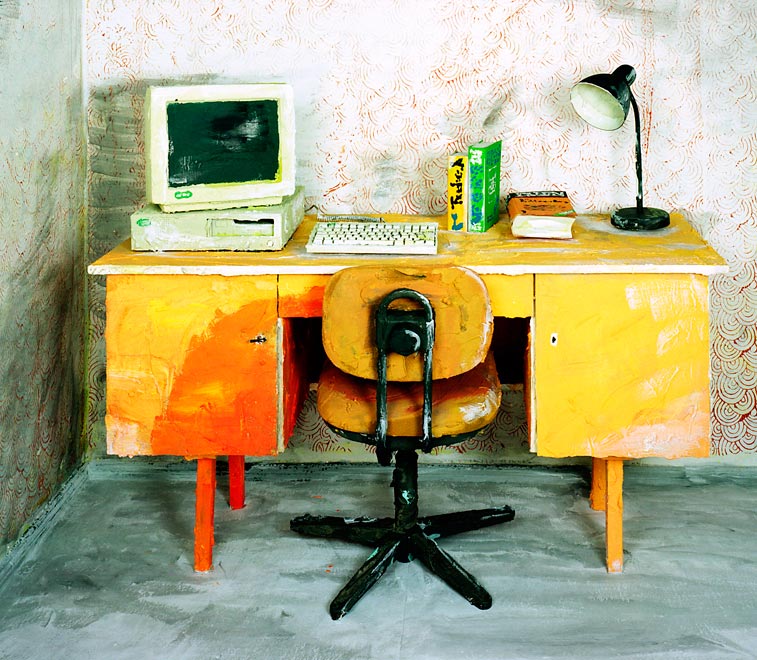
Desk, C-Print auf MDF, 100 x 108 cm
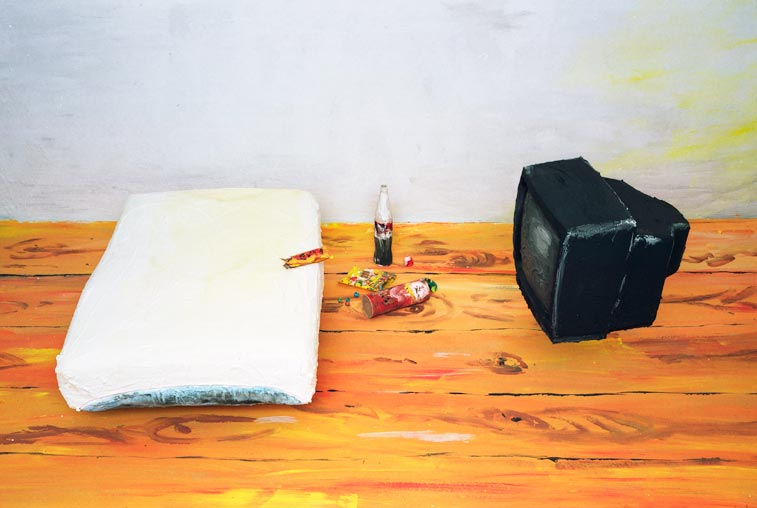
TV, C-Print auf MDF, 100 x 150 cm
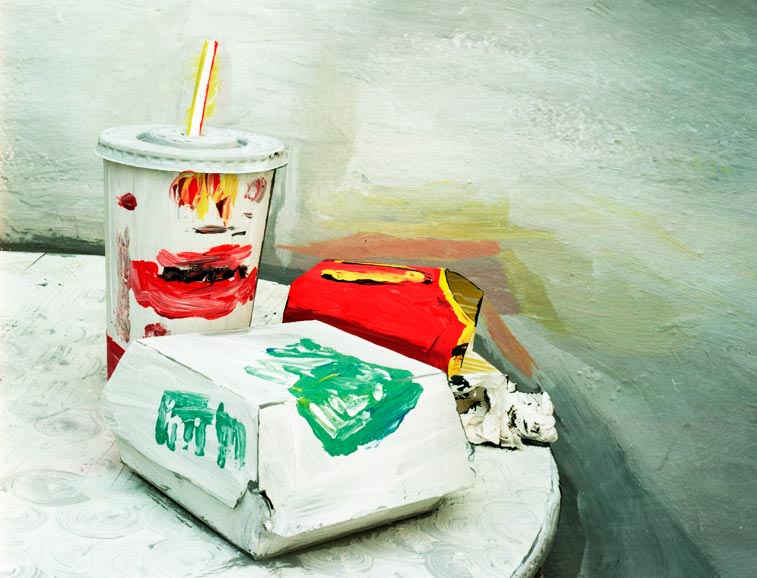
Stillleben with MC, C-Print, 50 x 63 cm
2009-2012 Master of Fine Arts – Professor Tina Bara
2009 Diploma with highest honours at the Academy of Visual Arts Leipzig – Professor Tina Bara
2003-2009 Studies of Photographie at the Academy of Visual Arts Leipzig
2001-2003 Studies of Photographie at the University in Essen
Grants/Awards
2022 Scholarship, Leipzig
2020 – Denkzeit – Kulturstiftung des Freistaates Sachsen
2017 Katalogförderung, Kulturamt der Stadt Leipzig
2017 Katalogförderung, Stiftung Kunstfonds Bonn
2016 Artists support from the Heussenstamm Foundation, Frankfurt/Main
2015 Otto Steinert Award
2013 Scholarship Stiftung Kunstfonds Bonn
2012 Scholarship Trustee-Program Else-Heiliger-Fonds Konrad- Adenauer-Stiftung
2009 gute_aussichten – junge german photography
2007 Nomination for Plat(t)form 07 Photomuseum Winterthur
2006 Kodak Young Talent Award
Exhibitions
2023
„Grand Opening“, shower gallery, Leipzig
2021
„IM FLUTLICHT – Historische Fotografien und zeitgenössische Kunst“, Museum of Fine Arts, Leipzig (Catalog)
2020
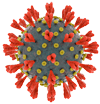
2019
„PARADIGMA Blickwechsel 2019_copyright“, Tapetenwerk, Leipzig
„Bauhaus Dessau“, Josef Filipp Galery, Leipzig (Solo)
„VISIONEN DER MODERNE HEUTE“, Museum for Photography, Braunschweig
2018
„25. Leipziger Jahresausstellung: SILBER“, Baumwollspinnerei Werkschauhalle, Leipzig (Catalog)
„f/stop Komplize: Bauhaus Dessau“, Josef Filipp Gallery, Leipzig
„Das ganze Programm [Please Allow Me to Introduce Myself ...]“, Josef Filipp Gallery, Leipzig
„gute aussichten DELUXE“, Haus der Photographie - Deichtorhallen, Hamburg
2017
„Kundmanngasse 19„ Josef Filipp Gallery, Leipzig
„gute aussichten DELUXE„ Museo de la Cancillería Mexico City, Mexico
2016
„Bizarre!“, AIAP, Monaco (Catalog)
„Paintings, Drawings & Photo's“ (with Sabastian Hosu), Rutger Brandt Gallery, Amsterdam (Solo)
„f/stop Photography Festival Leipzig“, Gallery the grass is greener, Leipzig
„Projektion - Fotografische Behauptungen“, Darmstadt Days of Photography, Main Exhibition, Darmstadt
„Art Paris“, represented by Rutger Brandt Gallery Amsterdam, Paris
„Kundmanngasse 19“, Heussenstamm Gallery, Frankfrut am Main (Solo)
2015
„PAN Amsterdam“ represented by Rutger Brandt Gallery, Amsterdam
„The world is everything that is the case“ (with Wolfram Ebersbach), Gallery the grass is greener, Leipzig (Solo)
2014
„REALITÄTEN ("Komplizen"-Ausstellung zum f/stop Festival)“, Gallery Queen Anne, Leipzig
„EHF Benefit-Ausstellung 2014“, Akademie der Konrad-Adenauer-Stiftung, Berlin
2013
„Nachbilder“, Gallery Queen Anne, Leipzig
„TWO IN ONE“ (mit Katharina Pöpping), E-Werk, Freiburg (Solo)
„EHF Benefit-Ausstellung 2013“, Akademie der Konrad-Adenauer-Stiftung, Berlin
2012
„Panhorama“, Gallery Queen Anne, Leipzig (Solo; Catalog)
„Meisterschülerausstellung“, HGB, Leipzig
„EHF Benefit-Ausstellung 2012“, Akademie der Konrad-Adenauer-Stiftung, Berlin
"Mustererkennung", Museum für Angewandte Kunst, Köln
2011
„Gruppenausstellung der Träger des EHF 2010-2012 – Stipendiums“, Akademie der Konrad-Adenauer-Stiftung, Berlin
„EHF Benefit-Ausstellung 2011“, Akademie der Konrad-Adenauer-Stiftung, Berlin
„GEMALTER RAUM - FOTOGRAFIERTE MALEREI (mit Maxim Liulca)“, Periscope, Salzburg (Solo)
„Auslöser – Fotografie-Konzepte in Leipzig – eine Auswahl“, Kunsthalle der Sparkasse Leipzig (Catalog)
2010
„Frei nach Malerei“, Künstlerhaus Dortmund
„Eigenleben“, G5 Kultur, München
„gute aussichten - junge deutsche fotografie 2009/2010“ Haus der Photographie - Deichtorhallen, Hamburg (Catalog)
„4. Internationalen Fotografie-Biennale "GRID 2010" in Amsterdam
„Festival PhotoEspana“, Goethe-Institut, Madrid, Spanien
„gute aussichten 2009/2010“, Art Foyer DZ Bank, Frankfurt/Main
„gute aussichten 2009/2010“, Goethe-Institut, Washington DC, USA
2009
„gute aussichten - junge deutsche fotografie 2009/2010“ mit der Arbeit „in situ“ Museum Marta, Herford
„INNEN // AUSSEN // INNEN“, Tapentenwerk, Leipzig
„There is no second world, no hinterworld, no utopian place.“, Galeria Plan B, Berlin
„Diplomausstellung in der HGB, Leipzig
„in situ“, Gallery Quartier, Leipzig (Solo, Catalog)
2008
„So jung kommen wir nicht mehr zusammen...“, Pasinger Fabrik, München (Catalog)
„rome rom roma, 50/50“, Goethe-Institut Rom, Rom
„Introspections“, Gallery |doppel de|, Dresden
„Bermuda“-Annenkapelle in GZ-Görlitz
2007
„500 mal x“ Ausstellung zum Studienpreis der Hochschule für Grafik und Buchkunst, Leipzig (Catalog)
„Kodak Nachwuchsförderpreis“, Haus der Wirtschaft, Stuttgart
„die 35...“, Welde Brauerei Kunstpreis, Plankstadt
Beitrag bei der Kurzfilmnacht Schwerin mit dem Videoloop „eines morgens...“, Schwerin
2006
„Ausgezeichnet“, Pressehaus Gruner und Jahr; Hamburg
„Kodak Nachwuchsförderpreis“ Visual Gallery , Photokina; Köln (Catalog)
„Twice – angemalt und ausgestellt“, HGB; Leipzig
2005
„Private Rituale“, Photogallery Friedrichshain; Berlin
„Autoportret i Inscenizacja“, Wrocław, Polen
—imprint: georg brückmann, Franz-Flemming-Straße 15, 04179 leipzig — kontakt@georg-brueckmann.de —